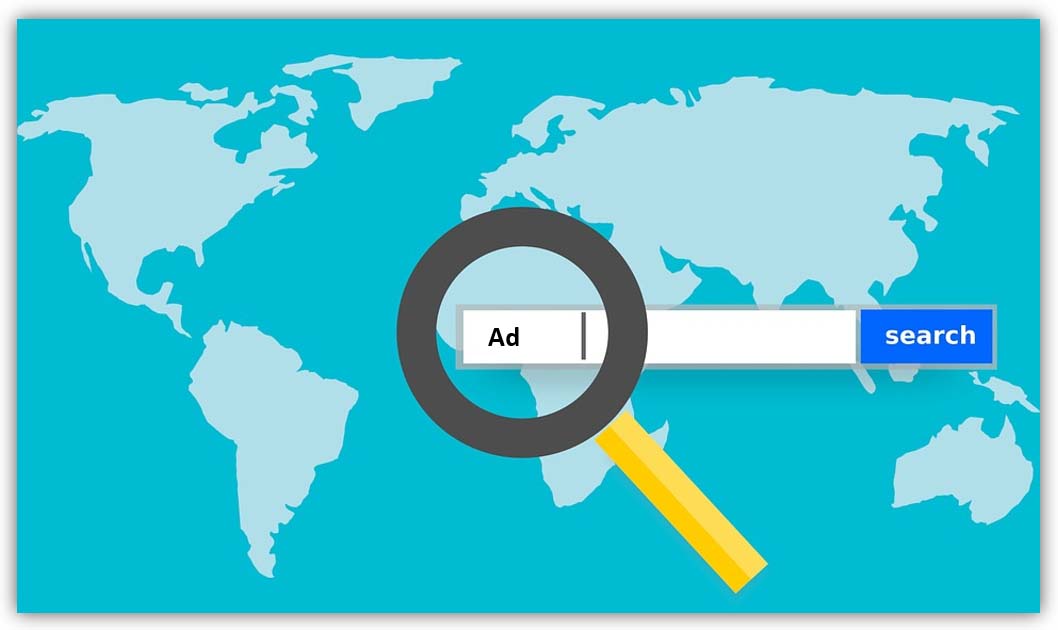What does a user get to see on search engine when a term or query is entered in the search bar? The user gets to see some results related to his or her query. They would see some ‘relevant’ texts or articles, a few related images, a number of links to web pages, and maybe a few offers or map to locations related to the search. Users might not even realize and categorize these results.
But, if you notice, you will see that the results are of two types; some are organic search results and some are ads. These ads are created by advertisers offering products or services by paying some amount to the publisher.
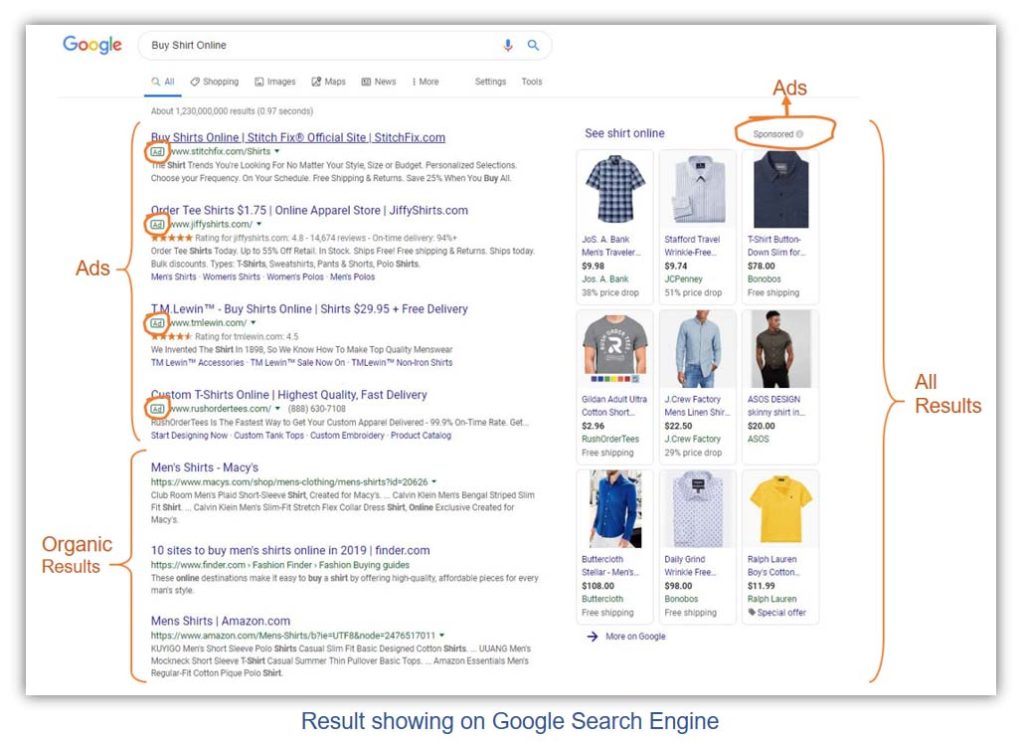
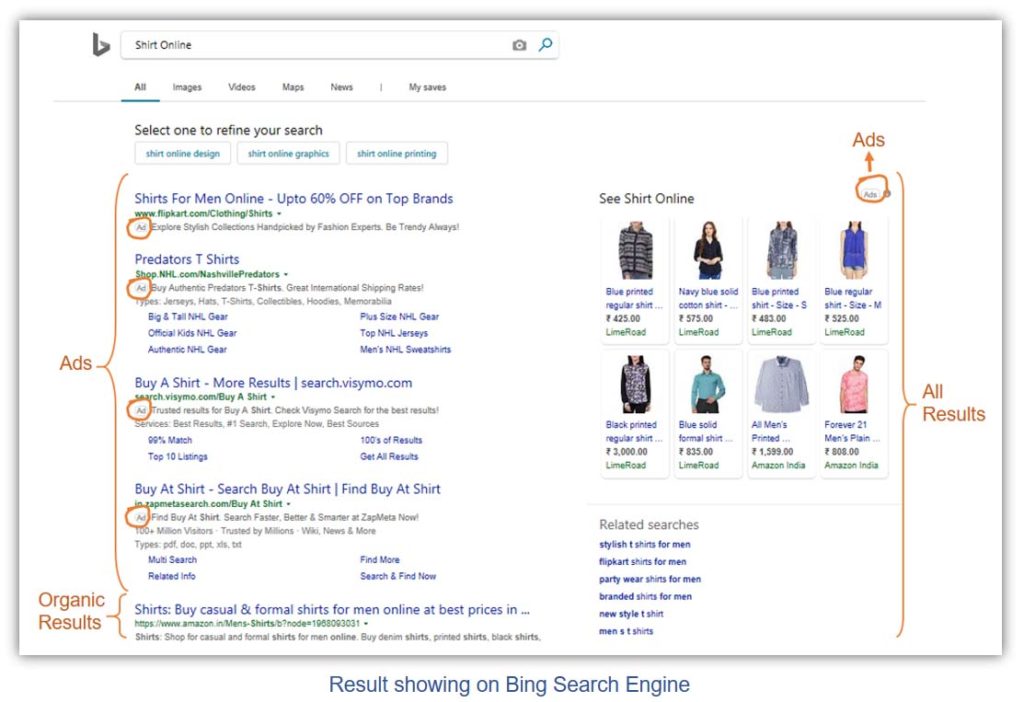
You will also see that there are many types of ads. These ads have specific placements for different devices for ease of navigation and better user experience.
In this blog we talk about the appearance and placement of these paid ads on search result pages on different devices.
Before we further explore this subject, let’s quickly get familiar to a few topics for better understanding.
What are search results?
‘Search results’ are the ‘identified findings or data’ for a search on a search engine. The result data correspond to the specific character or term mentioned by the user in the search bar to find particular sites or items on the world wide web.
What are paid ads?
When the results are displayed on the search engine result pages, we often notice that a few results have words like ‘Ads’ or ‘Sponsored’ showing with them. These words are highlighted in a different color (refer to image below). This is to indicate that these are paid advertisements, known as ‘Paid Ads’.
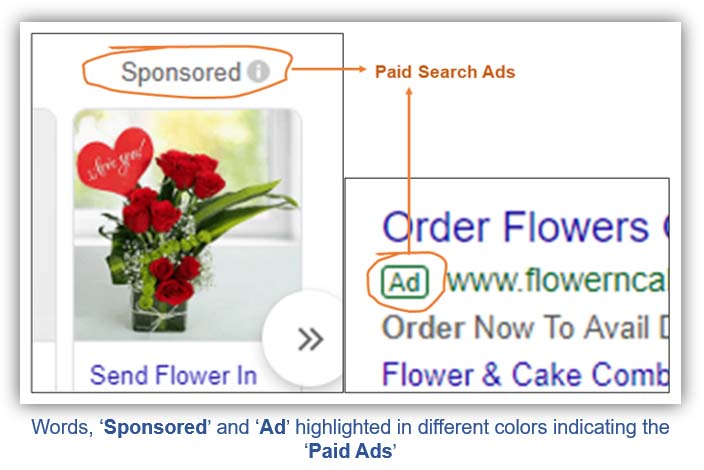
P.S.The non-paid search results are known as ‘organic results’.
(Refer to the image below)
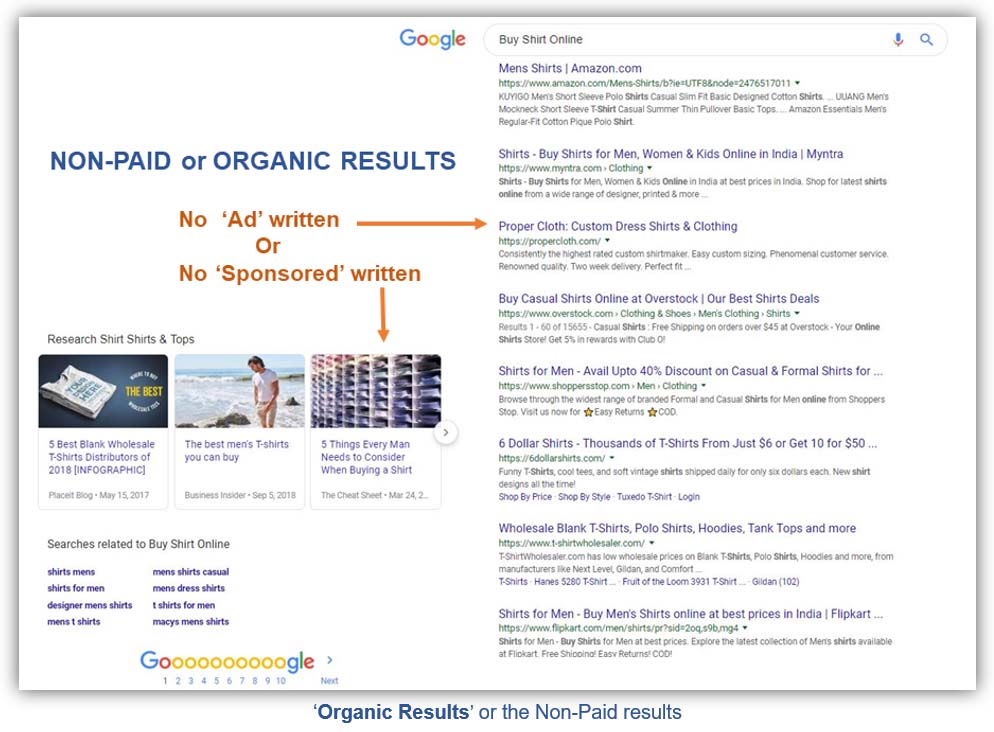
What is PPC?
PPC is for pay-per-click, it is an online advertising medium used by advertisers to display their ads on a search engine.
The advertisers have to pay every time their ad is clicked by an online visitor on a search result page.
Pay Per Click is also known as ‘Paid search’.
Search result placements on different devices:
As you must have noticed, mostly all websites and apps appear differently on different devices.
There are two major device screen displays that we consider for online marketing; desktop display and mobile display.
The size and content of the search engine result pages are also optimized to fit the screen size of the device for ‘ease of interaction of the users’. This needs to be done because of the noticeable screen size difference between the two devices. It creates better user interface leading to better user experience.
Many times the contents of the search result pages are not same on both devices, considering user location and other factors.
The images below show the Google search result page for the same search made on the two different devices for, ‘car rentals in San Francisco’. The search results are different on desktop and on mobile. There are many conditions and algorithm set by advertisers and the search engines respectively which make this difference in the results.
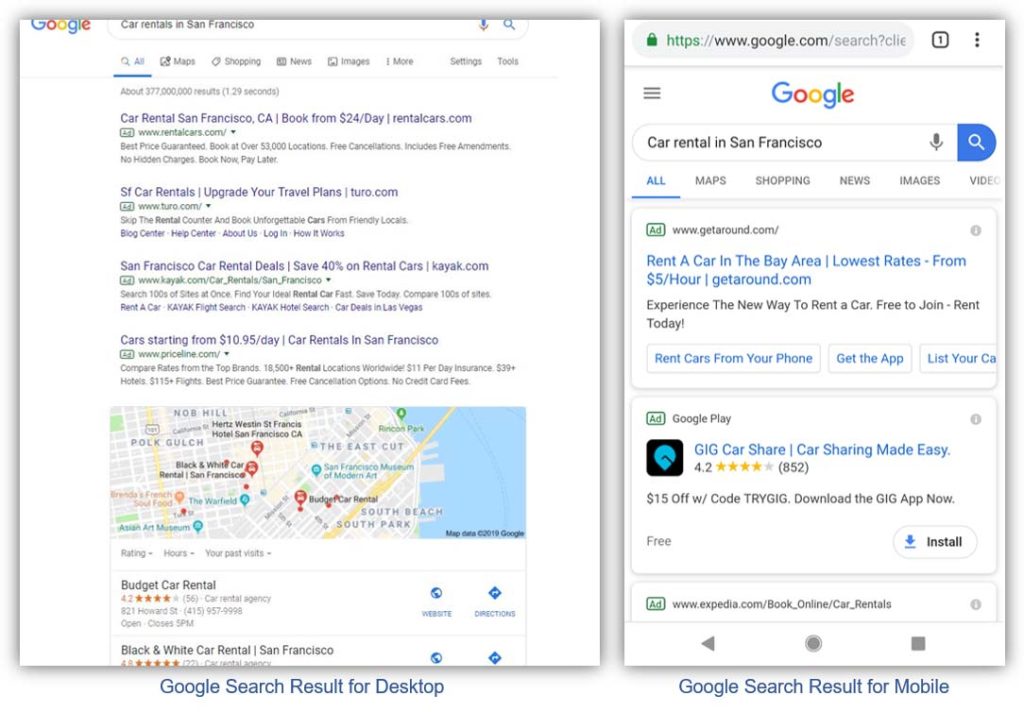
Similarly, different types of paid search ads are placed accordingly on the search result pages on different devices.
Now, you may be thinking that obviously the websites and apps have to be tweaked for different devices for the ease of the users. But, ‘what does the PPC ads have to do with where they show up on search result page on a device’?
Better position and placement of the paid ads on a display screen increases the chances of them getting noticed and clicked by the users. At what area of the result page or device screen they appear make a huge impact on the probability of these ads being able to achieve their goal.
Also, many advertisers may prefer to display their ads on mobile devices as more people use mobile phones over desktop for searching.
The ad is displayed on the basis of screen size keeping in mind the user intent, location accessibility and other factors.
Types of paid search ads and their placements on different devices
If you further study about paid ads, you will find that there are different types of paid search ads seen on any search engine. These paid ads are designed differently to serve different purposes. They follow a certain format for their content and placements on a search result page.
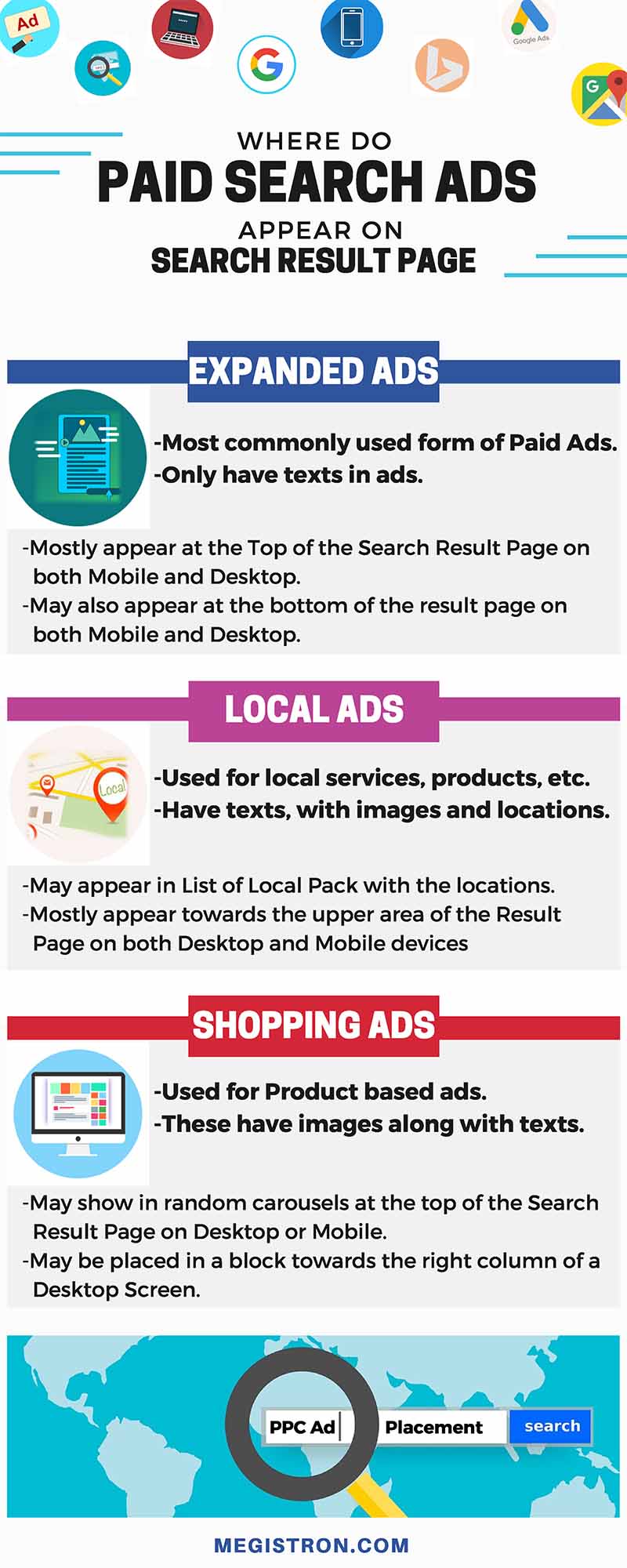
Expanded Ads:
Expanded Ads are paid search ads that have only text in their content. They are the most commonly used form of paid search ads.
It is used to promote products, services and other types of ads campaigns like fundraisers, sign up for a cause, promotions, etc.
Their content includes headlines with words including the targeted keywords, Display URL, Final URL that takes you to the landing page and description that includes call-to-action and may include product or service details, offers, features, etc.
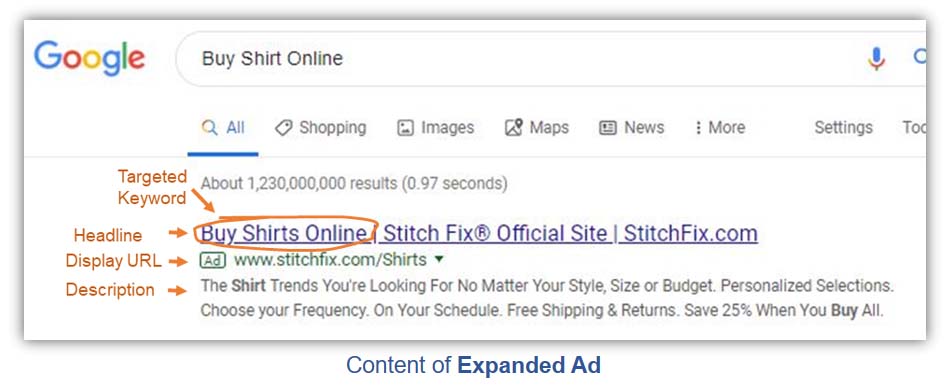
Placement for Expanded Ads:
- They mostly appear at the top of the search results, and may also appear at the bottom of the search engine result page on both mobile and desktop.
- Up to four text ads appear at the top of the organic result on both mobile and desktop displays.
- Expanded ads may also appear in the list of local packs (in Google search engine).
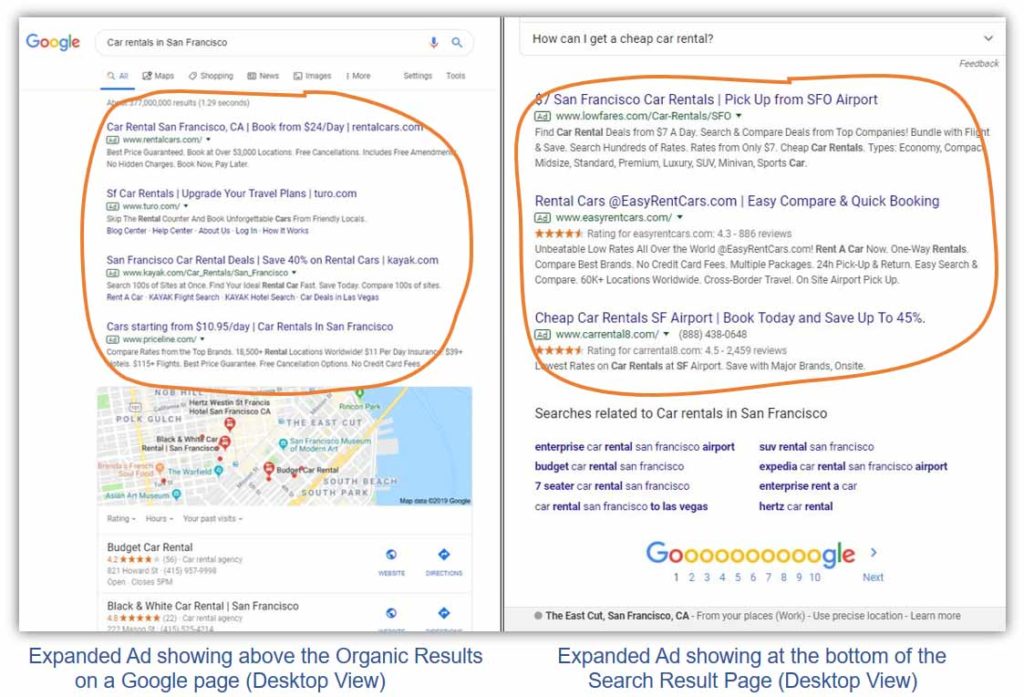
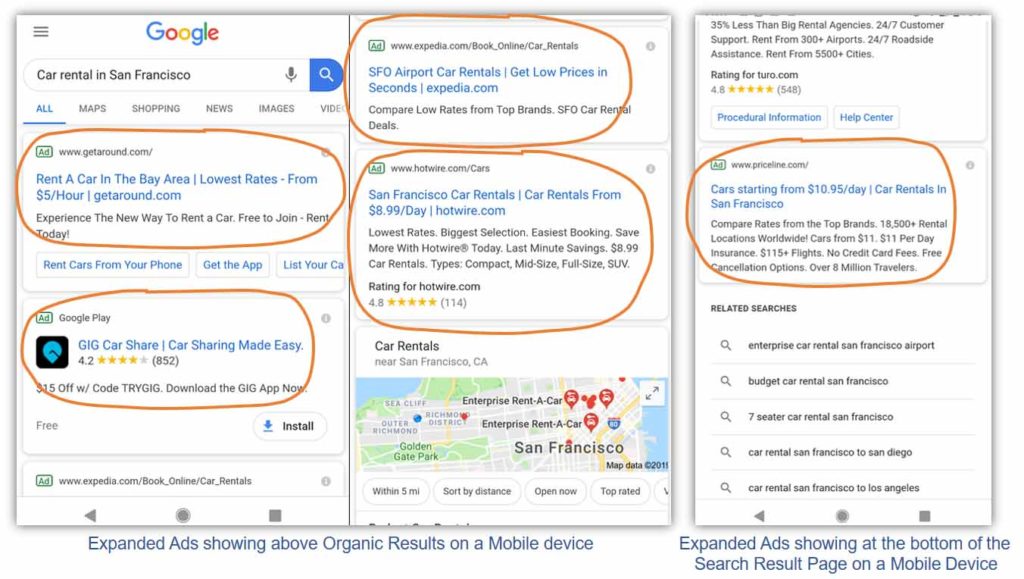
Local PPC ads:
Local Ads are paid search ads that display results for local services, locally available products, etc. for a search made by an online visitor.
They have text, may have images as well. It may show the location of those local businesses as part of the search result.
The ad content includes a headline, description, location, brand or company’s name, offers and may also have reviews of the product.
Upon clicking the ad the user is taken to the specific business webpage or/and to show directions on map.
Placement for Local paid ads:
- Local paid search ads may appear in the list of local pack along with the locations and may appear on maps.
- They mostly appear towards the upper area of the result page on desktop and mobile devices.
- On mobile devices, they may appear below the Expanded Ads.
- On desktop, they mostly appear above Expanded ads and organic results but below Shopping ads.
- ‘Local Paid Search Ads’ are also highlighted by the word, ‘Ad’ in some other color.
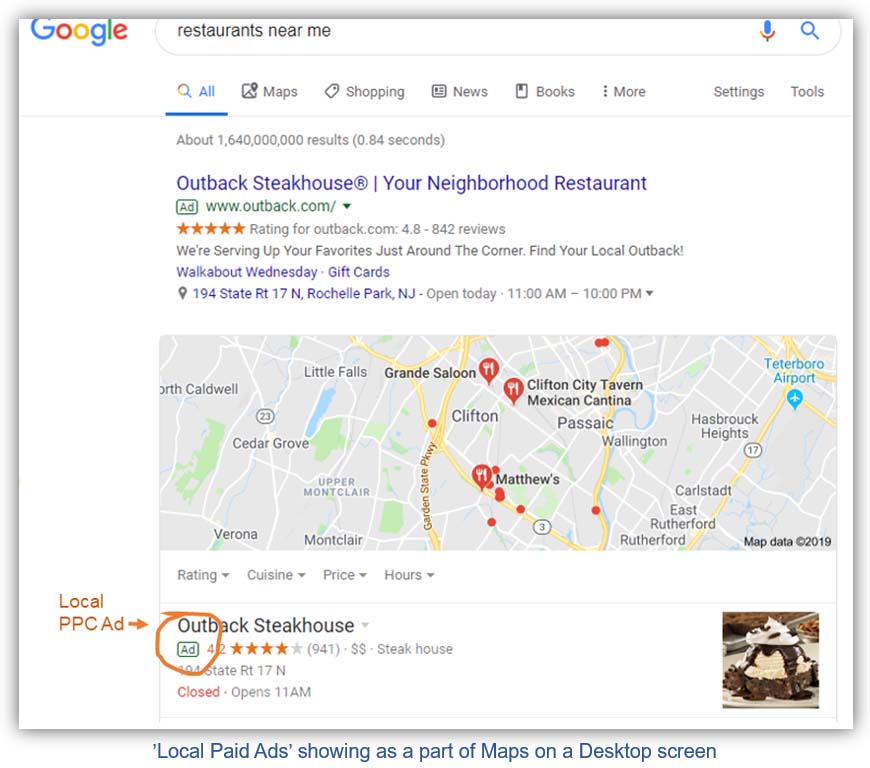
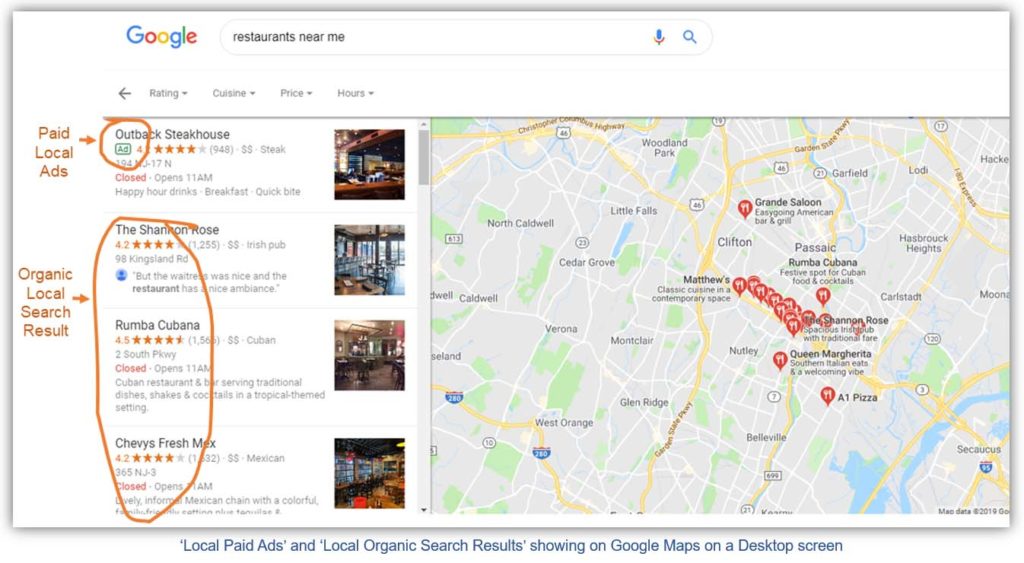
PPC Shopping Ads:
PPC Shopping Ads are paid search ads that are used for product based advertisements where the intent of the ad is to make the user buy the product. They work on similar lines as Expanded Ads; triggered when keywords match the search terms. These are image-based ads, from a brand’s product catalog, that matches the searched keyword.
They contain a title (having a short description about the product), its price, business name, and may also have offers and reviews to the product. On clicking the Shopping ad, the user is taken to the product’s webpage. The images are also clickable.
It is ideal for Shopping ads to take the online audience to the exact page of the displayed product to facilitate quicker conversion.
Placement for PPC Shopping Ads:
- These ads may show up in random carousels at the top of the search result page on desktop or mobile display.
- Or, may be placed in a block towards the right column of a desktop screen. The column display of Shopping ads are also commonly known as ‘Knowledge Panels’ or ‘Knowledge Cards’.
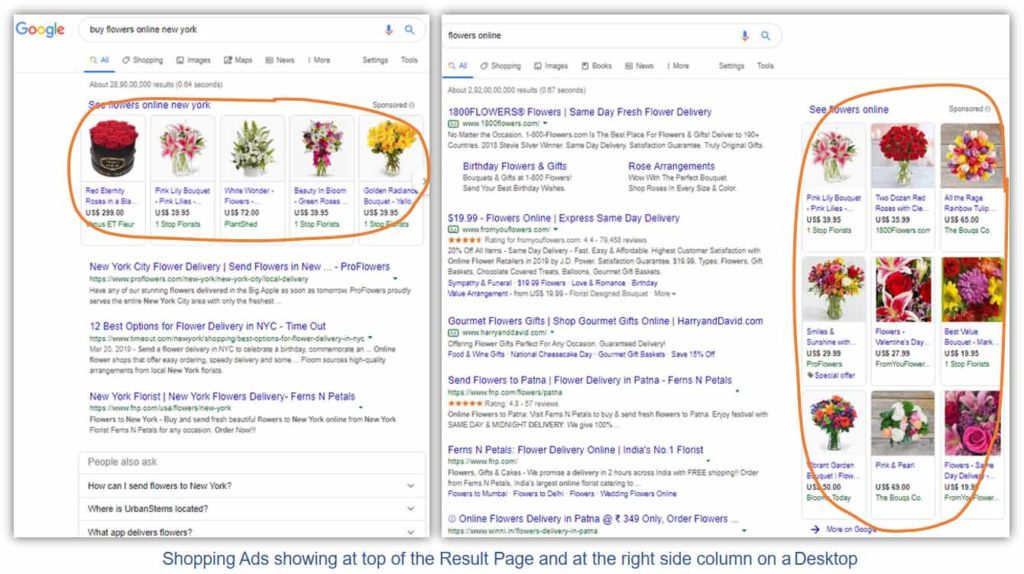
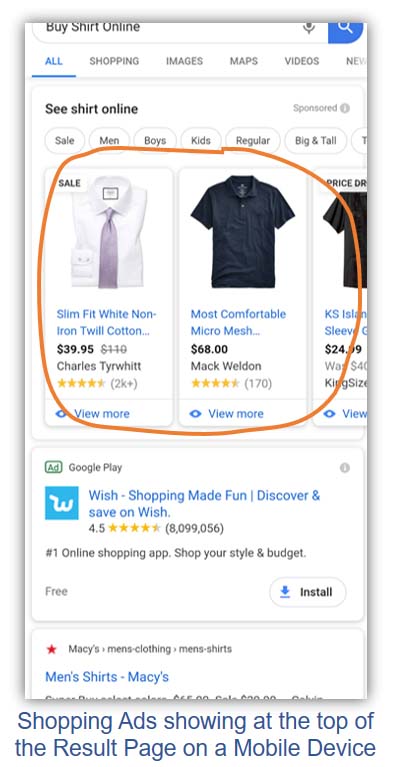
Reasons why your paid search ads are not showing
Creating a paid ad campaign is quite easy. But, to actually see the positive effects of the ad campaign which would let you reach your set goals, you need to be careful of many small yet important details. From selection of right keywords to optimizing your paid ad for better ad rank, understanding the correct bidding process and calculations, etc. all synced together help you reach your set goals.
Many times you might notice that though you did all the things right, your pay-per-click ads ads are not showing. This happens because of some minor errors in the ad structure or setting, or may be some other issue.
There could be many reasons for paid search ads to not show up. Few of the reasons could be:
- Budget for the day is over – If your budget for the day for the PPC Ad is exhausted, your paid ad would not show in the search result pages.
- Ad Status is ‘not enabled’ – if your ad status is ‘not enabled’ or is ‘Paused’, your ad will not show in the search results.
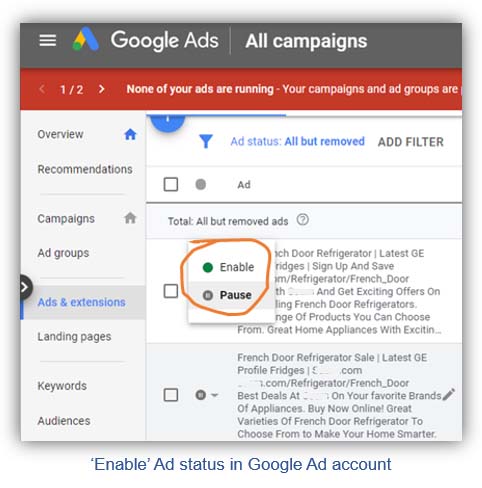
- Lower ad rank score during an auction – Auctions decide which ad will appear and at what position every time a search is made on search engines. During the auction process, only ads with sufficiently higher Ad Rank value are eligible to show for a specific search. You may read about Google’s Auction process here at Google support.
- May be your ad is showing beyond first page – Maybe your ad is being shown on the second page or the third page. This happens because of the ad rank process done by search engines, which may make your ad appear on the pages other than the first.
- Maybe you are not using keywords relevant to your ads – If a user searches a keyword which you are not targeting in your ads, your ads would not show to him or her.
- Maybe you are the advertiser – Many times search engine do not show the Ad to the advertisers if the IP address has been excluded.
- Maybe you are out of the targets and conditions set by the advertiser – If an Ad has a set targeting and condition for audience demographic, location, language, device, or time, and you do not match the set conditions, the ad may not show.
What should you ideally do if your ads are not showing?
It is always a good idea to create PPC ads through a consultancy or company that has been providing service for PPC ads creation.
You can also check the below mentioned points for understanding what needs to be done if your ads do not show.
- Make your ads responsive – Responsive ads have better chances of getting noticed or clicked. If you add a “call to action” like ‘Shop now’, ‘Click to know more’, ‘Sign up now’, ‘Call now’, etc. to your ads, users have a better tendency to respond to them.
- Use analytical tools to know the maximum visitor engagement hours and schedule your ads to show during those hours. You can also take help of automatic settings. For example, bid adjustment tool in Google Ad automatically bid higher during peak hours.
- Increase the Quality Score of your ad – An increased quality score keeps your ad showing more often, and may help in continue showing your ad on the first page.
Things you could do to increase the quality score of your Paid Ad
- Add ad extensions, like adding your contact number, link to your service page, etc.
- Rotating all your ads, lets them show up again and helps in analyzing which ones are doing better. You can do a corrective action for poorly performing ads which are bringing down your quality score.
- Change or rewrite ads that are not performing well. Poorly performing ads reduce the quality score.
- Remove or pause those keywords which are not performing well. Add relevant keywords in your ad using a Keyword Planner and past search term report.
Overall, just make sure that the keywords of your ads always have a high-quality score and a higher bidding amount. It will help in showing your ads and preferably showing at a higher position in the pool of the search results.
Depending upon the type of your ad, whether Expanded, Shopping or Local and the device the user is using to search, the placements and locations of ads are decided.
And, by ensuring a good quality score and bidding amount, you may be able to get a preferred location or position for your ads.
REF:

